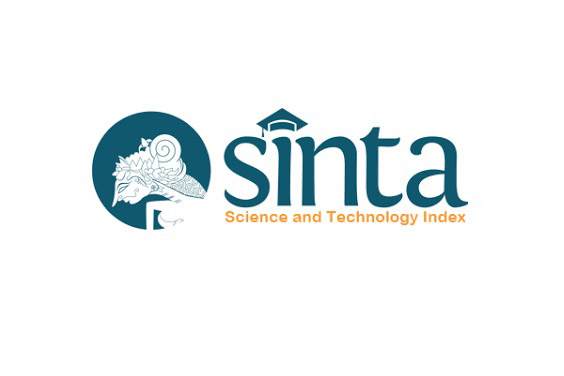Aktivitas Antibakteri dan Skrining Fitokimia Ekstrak Etanol Daun Jambu Mete Anacardium occidentale L. Terhadap Pertumbuhan Escherichia coli Antibacterial Activity and Phytochemical Screening of Ethanol Extract of Cashew Leaves Anacardium occidentale L. Against Escherichia coli
Abstract
ABSTRACT
Background: All parts of the cashew tree Anacardium occidentale L. (especially the leaves and bark) have been widely used as traditional herbal medicines, and are used throughout the world. Thus, in recent decades, the traditional medicinal properties of the Anacardium plant, and its various biological effects are being studied extensively. Purpose(s): This study aims to conduct a preliminary study of the antibacterial properties and phytochemical screening of the ethanol extract of cashew leaves. Methods: The antibacterial test of was determined by the Kirby baeur disc paper diffusion method. Qualitative test of phytochemical content was carried out using chemical reagents. Results: The results indicated that the ethanol extract of cashew leaves has an inhibitory effect on the growth of Escherichia coli. The smallest inhibition zone was found in the extract with a concentration of 10% of 5.75 mm and the largest was found at a concentration of 100% with a diameter of 14 mm. The phytochemical screening revealed that extracts contained; alkaloids, flavonoids, steroids, terpenoids, phenolics, saponins, and tanins Conclusion: The ethanol extract of cashew leaves was able to inhibit the growth of Escherichia coli test bacteria at all concentration variations. Phytochemical screening also found that the ethanol extract of cashew leaves contains alkaloids, flavonoids, steroid terpenoids, phenolics, saponins, and tannins which are known to have antibacterial properties.
Keywords: cashew, ethanol extract, antibacteria
ABSTRAK
Latar Belakang: Semua bagian pohon jambu mete Anacardium occidentale L. (terutama daun dan kulit batang) telah banyak digunakan sebagai obat herbal tradisional, dan digunakan di seluruh dunia. Dengan demikian, dalam beberapa dekade terakhir, sifat obat tradisional tanaman Anacardium, dan berbagai efek biologis sedang dipelajari secara ekstensif Tujuan: Penelitian ini bertujuan untuk melakukan studi pendahuluan sifat antibakteri dan skrining fitokimia dari ekstrak etanol daun jambu mete. Metode: Uji antibakteri ekstrak ditentukan dengan metode difusi kertas cakram Kirby baeur. Uji kualitatif kandungan fitokimia dalam ekstrak dilakukan dengan pereaksi kimia. Hasil: Ekstrak etanol daun jambu mete memiliki daya hambat terhadap pertumbuhan Escherichia coli. Zona hambat terkecil terdapat pada ekstrak dengan konsentrasi 10% sebesar 5,75 mm dan terbesar terdapat pada konsentrasi 100% dengan diameter 14 mm. Hasil skrining fitokimia menunjukkan bahwa ekstrak etanol daun jambu mete mengandung senyawa golongan alkaloid, flavonoid, steroid, terpenoid, fenolik, saponin, dan tanin Simpulan: Ekstrak etanol daun jambu mete mampu menghambat pertumbuhan bakteri uji Escherichia coli pada semua variasi konsentrasi. Skrining fitokimia juga menemukan bahwa dalam ekstrak etanol daun jambu mete mengandung alkaloid, flavonoid, steroid terpenoid, fenolik, saponin, dan tannin yang diketahui memiki kemampuan sebagai antibakteri
Kata Kunci: jambu mete, ekstrak etanol, antibakteri
Full Text:
PDFReferences
Abubakar, A. and Haque, M. (2020) ‘Preparation of medicinal plants: Basic extraction and fractionation procedures for experimental purposes’, Journal of Pharmacy And Bioallied Sciences, 12(1), p. 1. doi:10.4103/jpbs.JPBS_175_19.
Berthe, T. et al. (2013) ‘Evidence for Coexistence of Distinct Escherichia coli Populations in Various Aquatic Environments and Their Survival in Estuary Water’, Applied and Environmental Microbiology, 79(15), pp. 4684–4693. doi:10.1128/AEM.00698-13.
Ifesan, B.O.T. et al. (2013) ‘Antioxidant and Antimicrobial Properties of Selected Plant Leaves’, European Journal of Medicinal Plants, p. 9.
Kaewpiboon, C. et al. (2012) ‘Studies of the in vitro cytotoxic, antioxidant, lipase inhibitory and antimicrobial activities of selected Thai medicinal plants’, BMC Complementary and Alternative Medicine, 12(1), p. 217. doi:10.1186/1472-6882-12-217.
Liangpanth, M. and Tongdeesoontorn, W. (2018) ‘Antioxidant and Antimicrobial Properties of Cashew (Anacardium occidentale L.) Leaf Extracts’, p. 10.
Monteiro, A.S. et al. (2017) ‘ESTUDO DA ATIVIDADE ANTIMICROBIANA DA CASCA DA CASTANHA DE CAJU (Anacardium occidentale)’, The Journal of Engineering and Exact Sciences, 3(4), pp. 0705–0710. doi:10.18540/24469416030420170705.
Nassar, M.S.M., Hazzah, W.A. and Bakr, W.M.K. (2019) ‘Evaluation of antibiotic susceptibility test results: how guilty a laboratory could be?’, Journal of the Egyptian Public Health Association, 94(1), p. 4. doi:10.1186/s42506-018-0006-1.
Obaineh, M. (2013) ‘Phytochemical Constituents and Medicinal Properties of Different Extracts of Anacardium Occidentale and Psidium Guajava’, Asian Journal of Biomedical and Pharmaceutical Sciences, p. 4.
Paitan, Y. (2018) ‘Current Trends in Antimicrobial Resistance of Escherichia coli’, in Frankel, G. and Ron, E.Z. (eds) Escherichia coli, a Versatile Pathogen. Cham: Springer International Publishing (Current Topics in Microbiology and Immunology), pp. 181–211. doi:10.1007/82_2018_110.
Salehi, B. et al. (2020) ‘Antioxidant, Antimicrobial, and Anticancer Effects of Anacardium Plants: An Ethnopharmacological Perspective’, Frontiers in Endocrinology, 11, p. 295. doi:10.3389/fendo.2020.00295.
Tafinta, I.Y. et al. (2020) ‘Phytochemical Screening and Antifungal Activities of Cashew (Anacardium occidentale Linn.) Leaves Extract on Some Fungal Isolates’, Asian Plant Research Journal, pp. 30–37. doi:10.9734/aprj/2020/v5i330108.
WHO. Traditional Medicine [Online]. (2018). Available online at: https:// afro.who.int/health-topics/traditional-medicine (accessed).
Yuniharni, D. and Marpaung, L. (2021) ‘Uji Aktivitas Antibakteri Senyawa Flavonoid Total dan Tanin Total dari Ekstrak Daun Jambu Monyet (Anacardium occidentale. L)’, 3, p. 8.
Refbacks
- There are currently no refbacks.






